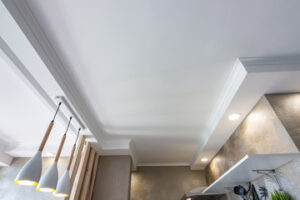Mold can cause damage to your home’s structure and property, and lead to health issues like sneezing and fatigue. It can also weaken structures, like wooden wall studs, and decrease property value.
A DIY solution is to mix a few tablespoons of white vinegar with water and a bit of baking soda to create a paste. This should then be applied to affected areas. Contact All Pro Services now!

A qualified mold inspector will visually examine your property to identify areas affected by mold. This is the first step in determining the scope of the problem and what needs to be done to remove it. During this inspection, the inspector will look for visible water damage, discoloration, fuzziness, musty odors, and other signs of mold growth. They may also use specialized tools to detect hidden moisture sources and areas.
After the visual examination, the mold inspector will take air and surface samples. These samples are then sent to a laboratory for analysis. This step will help identify the types of fungi present, as well as their concentrations in the air and on various surfaces.
These samples will be used to develop a remediation protocol that will guide the rest of the mold removal process. It’s important that the air and surfaces are tested after the cleanup is complete as well, to ensure that all of the spores have been eliminated.
During the mold remediation process, all affected materials will be cleaned and disinfected to eliminate any spores that may have survived. This includes non-porous materials like drywall, as well as porous materials such as carpeting and insulation. In some cases, the contaminated materials may need to be removed and replaced.
After the cleanup, the mold inspection company will re-inspect the property. This will help verify that all of the spores have disappeared and that the underlying cause of the mold has been addressed. This will also allow the restoration company to certify that the mold remediation was completed in compliance with their protocols and standards. If all is cleared, the inspection company will submit a report to all relevant parties.
Containment
During mold removal, it’s important to contain the infected area as much as possible. This is done to protect the health of the people in the home or building, as well as to ensure that the mold spores do not spread to unaffected areas of the property. The first step in containing an infested area is to install physical barriers. This can be done using heavy duty plastic (yard trash bags work well) or duct tape.
The second step in containing an infested space is to set up negative air pressure. This can be done by a HEPA filtered negative air machine that pulls the air from the affected area and exhausts it outside of the structure through flexible tubing or ducting. This creates a negative pressure environment that draws the mold spores against the plastic barrier and keeps them from becoming airborne.
It’s also important to use proper safety equipment during this process, including gloves, an N-95 respirator mask, and goggles or face mask. This helps to limit the number of spores that are inhaled by technicians during the mold removal process, protecting their health.
In larger spaces, it may be necessary to break up the space into multiple “containment zones” in order to keep the workers safe and prevent cross contamination. Typically, these are separated by plastic barriers and connected to each other with negative-pressure tunnels. This also makes it easier to transport contaminated and unsalvageable materials away from the site for disposal. It’s also important to create containment hallways, which are pathways from the infested space to the exit of the building. This is helpful for transporting contaminated and unsalvageable materials out of the building and for preventing further cross-contamination during cleanup.
Cleaning
If the source of the mold is addressed, then you’ll be able to stop it from coming back by taking steps like regularly wiping down surfaces with water and soap, sealing bare wood with a water-based polyurethane, or using a dehumidifier. You should also make sure that you keep your property clean by squeegeeing shower walls, floors, and doors after every use.
However, for more serious mold infestations, it’s recommended that you call in a professional. These professionals will use more thorough cleaning methods and can ensure that your home is completely mold free.
Before you begin any cleaning, be sure to set up a work area away from other rooms so that the mold spores don’t spread. Wear personal protective equipment like a mask and gloves, as well as long sleeves and pants to minimize your exposure to airborne mold spores.
The first thing you should do before starting the actual cleaning is to wipe down all surfaces with a damp cloth to remove any excess dirt and debris from the surface. This will help prevent further mold growth, especially on hard surfaces like drywall and tiles.
Next, you should saturate any areas of the wall or ceiling with a solution of equal parts baking soda and vinegar. Allow this to sit for a few minutes before scrubbing the area with a brush and rinsing it off with clean water. This will kill the mold spores and prevent them from returning.
Finally, you should dry the affected area as quickly as possible by running fans and opening windows to promote airflow. It’s important that you do this because any spores that are left behind will continue to grow and may even return after you’ve cleaned the area.
Disinfection
Mold spores are in the air all the time, and they can grow on almost anything. If the moisture is just right, they’ll start digesting whatever they’re growing on—including your valuables and your building materials. Some of the thousands of molds that exist can produce mycotoxins, which have been shown to cause a variety of health problems in some people.
The best thing you can do to prevent mold growth is to get rid of any underlying moisture issues. This will help protect your belongings from damage and will keep your indoor air quality as high as possible.
Water leaks, a flooded basement, or high humidity are all ideal breeding grounds for mold. In addition to cleaning up and disinfecting the affected areas, you should also use fans and dehumidifiers to circulate the air and further lower indoor humidity.
Bleach, a common household cleaner that’s effective at sterilizing hard surfaces and killing bacteria, is also an excellent mold killer. However, bleach should never be used on porous surfaces like fabric, as it will only discolor the material and may release toxic fumes into the air.
Vinegar, on the other hand, is a nontoxic cleaner that’s effective in killing both mold and bacteria. Clinical studies have shown that acetic acid, which is the main ingredient in vinegar, has the ability to kill dangerous bacteria such as E coli and mycobacteria that cause tuberculosis and leprosy.
Before you can properly clean and disinfect an area of your home or business, you must wear protective gear that includes a NIOSH-approved N95 mask (or higher), eye protection, and gloves. You should also make sure that your work space is well-ventilated and that you’re using a HEPA vacuum cleaner to keep the dust and mold spores from getting into the air where they can trigger allergies or asthma.
Disposal
Mold spores are in the air all the time and float around inside homes through windows, doors, AC/heating systems or hitch rides on clothing or pets. When they find a damp area they germinate and grow into active mold which requires cleaning and potentially removal or replacement of materials infested with it.
Mold remediation includes physically removing or cleaning household materials like drywall, carpeting and insulation. Professionals use special tools to remove these materials and double bag them before transporting them off-site for disposal. After removing affected materials, professionals spray the entire area with biocide to keep mold spores from growing back once they’re removed.
Nonporous surfaces, such as floors and walls can generally be cleaned by wiping or scrubbing them. If the surface is severely damaged, a professional may recommend the use of a chemical agent to kill the mold and prevent further spread. If the mold is a rare, toxic variety like Penicillium or Stachybotrys, a kit will likely be provided to test for these types of dangerous molds.
Once the surface is cleaned, it must be allowed to dry completely. This step can take several days, depending on the weather and the extent of the damage. Mold spores are very sensitive to light and can quickly regrow in areas with reduced sunlight.
If any materials that cannot be cleaned are found to be infested with mold, they should be disposed of as hazardous waste. Local landfills often accept contaminated material and can provide specific instructions for how to properly dispose of these materials. Alternatively, some recycling centers also accept certain types of contaminated waste and can recycle them into usable items.

